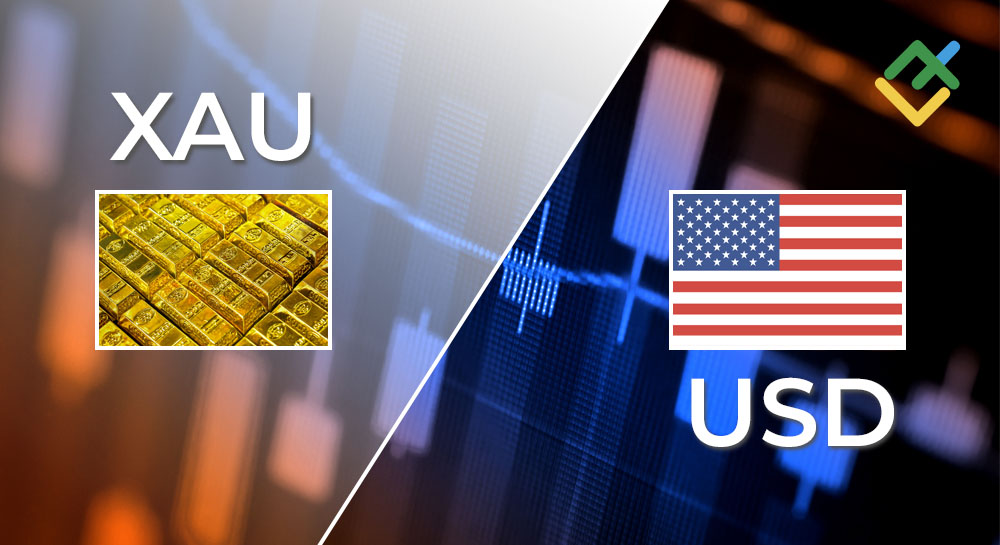
Market participants are anticipating fresh macro statistics after the publication of US PMI and labor market data last week, 02.09.2024 – 08.09.2024. This data will help make more accurate predictions for the upcoming US Fed meeting on September 17–18. Currently, the probability of the Fed’s interest rate cut is almost 100%, but it’s still unclear whether it will be by 0.25% or 0.50%. Most economists are inclining towards a 0.25% cut. However, the week of 09.09.2024 – 15.09.2024 may change the expectations. If the CPI values, scheduled for release on Wednesday, indicate another slowdown in US inflation, the probability of a more aggressive interest rate cut by the Fed will rise again.
Another highlight of the coming week is the European Central Bank’s monetary policy meeting. Most likely, the ECB leaders will take a pause again, preferring to wait for the Fed’s decision. Particular attention will be drawn to the press conference on the results of the ECB meeting planned on Thursday, September 12.
Besides, in the upcoming week, 09.09.2024 – 15.09.2024, the publication of macro data on China, the UK, Germany, and the US is expected.
Note: During the coming week, new events may be added to the calendar, and / or some scheduled events may be cancelled. GMT time
The article covers the following subjects:
Key facts
- Monday: China’s CPI.
- Tuesday: UK labour market data.
- Wednesday: US CPI.
- Thursday: ECB meeting and interest rate decision, US PPIs.
- Friday: US Preliminary Consumer Sentiment Index.
- Key events of the week: release of US CPI and ECB interest rate decision.
Monday, September 9
01:30 – CNY: Consumer Price Index (CPI)
The National Bureau of Statistics of China will release its fresh monthly data on consumer prices. The growth of consumer prices may trigger the acceleration of inflation, prompting the People’s Bank of China to implement tighter fiscal policy. Higher consumer inflation may cause yuan appreciation, while a low result may exert pressure on the currency.
Since China is the world’s second-largest economy, the publication of its significant macroeconomic data has a notable impact on the global financial markets. This influence extends particularly to the yuan, other Asian currencies, the US dollar, and commodity currencies. Moreover, China serves as the largest buyer of raw materials and supplier of a wide range of finished goods to the global commodity market.
The consumer inflation index value was +0.5% (+0.5% YoY) in July 2024, -0.2% (+0.2% YoY) in June, -0.1% (+0.3% YoY) in May, +0.1% (+0.3% YoY) in April, +0.1% (-2.7% YoY) in December 2023, -0.5% (-0.5% YoY) in November, +0.2% (0% YoY) in September, +0.3% (+0.1% YoY) in July, -0.2% (0% YoY) in June, -0.2% (0% YoY) in May, -0.2% (+0.2% YoY).
The increase in the consumer inflation index will positively affect the renminbi quotes, as well as commodity currencies. Conversely, if the data is worse than forecasted and there is a relative decline in the CPI, it may adversely affect the currencies, particularly the Australian dollar, given that China is Australia’s largest trade and economic partner.
Tuesday, September 10
06:00 – EUR: German Harmonized Index of Consumer Prices (Final Estimate)
The Harmonized Index of Consumer Prices (HICP) is published by the European Statistics and is calculated using a methodology agreed upon by all EU countries. The HICP is an indicator for measuring inflation and is used by the European Central Bank to assess price stability. A positive index result strengthens the euro, while a negative one weakens it.
Previous values YoY: +2.6%, +2.5%, +2.8%, +2.4%, +2.3%, +2.7%, +3.1% in January 2024, +3.8% in December, +2.3% in November, +3.0% in October, +4.3% in September, +6.4% in August, +6.5% in July, +6.8% in June, +6.3% in May, +7.6% in April, +7.8% in March, +9.3% in February, +9, 2% in January, +9.6% in December, +11.3% in November, +11.6% in October, +10.9% in September, +8.8% in August, +8.5% in July, +8.2% in June, +8.7% in May, +7.8% in April, +7.6% in March, +5.5% in February, +5.1% in January 2022.
The data suggests that German inflation continues to decelerate, albeit at a slower pace than expected. This situation is putting pressure on the ECB to ease its monetary policy. Figures lower than the previous reading will likely affect the euro negatively. Conversely, the resumption of inflation growth may provoke the appreciation of the euro. The growth of the indicator values is a positive factor for the currency.
If the August data turns out to be better than previous values, the euro may strengthen in the short term.
The preliminary estimate stood at +2.0%.
06:00 – GBP: Average Weekly Earnings Over the Last Three Months. Unemployment Rate
The UK Office for National Statistics monthly publishes a report on average weekly earnings covering the period for the last three months, including and excluding bonuses.
This report is a key short-term indicator of employee average earnings changes in the UK. An increase in wages is positive for the British pound, whereas a low indicator value is unfavorable. Forecast: The August report suggests that average earnings, including bonuses, rose again in the last three months, including May, June, and July, after gaining 4.5%, +5.7%, +5.9%, +5.7%, +5.6%, +5.6%, +5.8%, +6.5%, +7.2%, +7.9%, +8.1%, +8.5%, +8.2%, +6.9%, +6.5%, +5.8%, +5.9%, +6.0%, +6.5%, +6.%, +6.1%, +5.5%, +5.2%, +6.4%, +6.8%, +7.0%, +5.6%, +5.7%, +4.8%, +4.3%, +4.2% in previous periods. The earnings value excluding bonuses also increased with percentages at +5.4%, +6.0%, +6.0%, +6.0%, +6.1%, +6.2%, +6.6%, +7.3%, +7.7%, +7.8%, +7.8%, +7.8%, +7.8%, +7.3%, +7.2%, +6.7%, +6.6%, +6.6%, +6.7%, +6.5%, +6.1%, +5.8%, +5.5%, +5.2%, +4.7%, +4.4%, +4.2%, +4.2%, +4.1%, +3.8%, +3.7%, +3.8% in previous periods. These figures show continued growth in employee earnings levels, which is positive for the British pound. If the data outperforms the forecast and/or previous values, the pound will likely strengthen in the currency exchange market. Conversely, if the data falls short of the forecast/previous values, the pound will be negatively affected.
The UK unemployment data will be released at the same time. Unemployment is expected to stand at 4.2% for the three months of May, June, and July (against 4.2%, 4.4%, 4.4%, 4.3%, 4.2%, 4.0%, 3.8%, 3.9%, 4.0%, 4.1%, 4.2%, 4.3%, 4.2%, 4.0%, 3.9% in previous periods).
Since 2012, the UK unemployment rate has fallen steadily from 8.0% in September 2012. The unemployment decline is a positive factor for the pound, while its growth negatively impacts the currency.
If the UK labor market data appears to be worse than the forecast and/or the previous value, the pound will be under pressure.
Regardless, when the UK labour market data is released, the pound and the London Stock Exchange are expected to experience increased volatility.
12:25 – CAD: Bank of Canada Governor Tiff Macklem’s Speech
The Canadian economy, as well as the global economy, has been slowing down since 2020, primarily due to the impact of the coronavirus pandemic. Initially, Tiff Macklem stated that the country’s economy was fairly resilient. However, the situation has changed rapidly, and not for the better. Now, it will be interesting to hear Macklem’s thoughts on the sustainability of the Canadian economy and the central bank’s monetary policy in the face of declining inflation. In July, the annual Canadian CPI stood at +1.7% after +1.9%, +1.8%, +1.6%, +2.0%, +2.1%, +2.4% in January 2024. The Bank of Canada’s inflation target is in the 1% to 3% range.
If Tiff Macklem mentions the Bank of Canada’s monetary policy, the volatility in the Canadian dollar will grow sharply. A signal of monetary policy tightening will bolster the Canadian dollar. Conversely, an intent to ease monetary policy will have a negative impact on the currency.
Additionally, Tiff Macklem will likely clarify the Bank of Canada’s recent interest rate decision and provide guidance for investors ahead of the central bank’s next meeting, which is expected to take place next month.
Wednesday, September 11
12:30 – USD: Consumer Price Indexes (CPI)
The Consumer Price Index (CPI) measures the change in prices of a selected basket of goods and services over a given period and is a key indicator for assessing inflation and changes in consumer preferences. Food and energy are excluded from the Core CPI to provide a more accurate assessment.
A high index reading strengthens the US dollar because the probability of a Fed interest rate hike increases, while a low reading weakens the currency.
Previous values YoY:
- CPI: +2.9%, +3.0%, +3.3%, +3.4%, +3.5%, +3.2%, +3.1%, +3.4%, +3.1% +3.2%, +3.7%, +3.7%, +3.2%, +3.0%, +4.0%, +4.9%, +5.0%, +6.0%, +6.4% in January 2023;
- Core CPI: +3.2%, +3.3%, +3.4%, +3.6%, +3.8%, +3.8%, +3.9%, +3.9%, +4.0%, +4.0%, +4.1%, +4.3%, +4.7%, +4.8%, +5.3%, +5.5%, +5.6%, +5.5%, +5.6% in January 2023.
The data indicates a continued slowdown in consumer inflation, albeit at a slower pace than anticipated by the Fed. It remains markedly below the 2022 reading when US annual inflation hit a 40-year high of 9.1% in June. On the other hand, US inflation is still significantly above the Fed’s 2% target, which will force US central bank policymakers to keep the interest rate elevated.
If the figures are confirmed or prove to be lower than expected, the US dollar will likely decline in value in the short term. Readings higher than estimated will strengthen the currency, as it will increase the probability of the Fed keeping the interest rate at high levels for longer.
Thursday, September 12
12:15 – EUR: ECB Interest Rate Decision
The ECB will publish its decision on the main refinancing operations and the deposit facility rates, which currently stand at 4.25% and 3.75%, respectively.
The ECB’s tight stance on inflation and the level of key interest rates favor the euro, while a softer stance and lower rates weaken it. Given the high inflation in the eurozone, according to the ECB leadership, the risk balance for the eurozone’s economic outlook remains negative.
Anyway, the eurozone inflation continues to decelerate, showing +2.2% in August, +2.6% in July, +2.5% in June, +2.6% in May, +2.4% in April and March 2024. However, the ECB policymakers suggest that inflation is still high, and the Governing Council is determined to reduce it to 2% in a timely manner.
The ECB considers that GDP growth may shrink due to the energy crisis in the EU, increased economic uncertainty, global economic slowdown, and stricter financing conditions. Although the recession is not expected to last long, robust growth is also unlikely.
Therefore, based on these ECB signals, the interest rate on the main refinancing operations and the rate on the deposit facility will remain unchanged at the end of this meeting. However, there is a possibility of a tight monetary policy implementation and a potential interest rate hike or decrease, considering the high risks of recession in the eurozone and slowing inflation.
12:30 – USD: Producer Price Index (PPI)
The Producer Price Index (PPI) measures the average change in wholesale prices determined by manufacturers at all stages of production. The index is one of the leading inflation indicators in the United States, estimating the average change in wholesale producer prices.
Rising production costs increase wholesale selling prices, which ultimately boosts inflation. In normal economic conditions, growing inflation usually puts upward pressure on the national currency quotes, implying a tighter Central Bank monetary policy.
Previous values: +0.1% (+2.2% YoY) in July, +0.2% (+2.6% YoY) in June, -0.2% (+2.2% YoY) in May, +0.5% (+2.2% YoY) in April, +0.2% (+1,6% YoY) in March, +0.6% (+1.6% YoY) in February, +0.3% (+0.9% YoY) in January 2024, 0% (+0.9% YoY) in December 2023, -0.5% (+1.3% YoY), +0.5% (+2.2% YoY), +0.7% (+1.6% YoY), +0.3% (+0.8% YoY), +0.1% (+0.2% YoY), -0.3% (+0,9% YoY), +0.2% (+2.3% YoY), -0.5% (+2.7% YoY), -0.1% (+4.9% YoY), +0.7% (+5.7% YoY) in January 2023.
If the data exceeds the forecasted value, the US dollar will likely strengthen. Conversely, if the data falls below forecasted and previous values, this will exert pressure on the Fed. This could lead to the Fed’s monetary policy easing, which will negatively impact the US dollar.
12:45 – EUR: ECB Press Conference. ECB Monetary Policy Statement
This press conference will draw significant attention from market participants. Volatility may increase not only in euro quotes but also across the entire financial market if the ECB leaders make unexpected statements. ECB executives will evaluate the current economic situation in the eurozone and provide insights on the bank’s rate decision. Historically, after some ECB meetings and subsequent press conferences, the euro exchange rate experienced fluctuations of 3%-5% in a short time frame.
A dovish tone of the statements will negatively impact the euro. Conversely, a hawkish tone regarding the central bank’s monetary policy will bolster the euro.
Friday, September 13
14:00 – USD: University of Michigan Consumer Sentiment Index (Preliminary Release)
This indicator reflects American consumers’ confidence in the country’s economic development. A high reading indicates economic growth, while a low one points to stagnation. Previous indicator values: 67.9 in August, 66.4 in July, 68.2 in June, 69.1 in May, 77.2 in April, 79.4 in March, 76.9 in February, 79.0 in January 2024, 69.7 in December 2023, 61.3 in November, 63.8 in October, 68.1 in September, 69.5 in August, 71.6 in July, 64.4 in June, 59.2 in May, 63,5 in April, 62.0 in March, 67.0 in February, 64.9 in January 2023, 59.7 in December, 56.8 in November, 59.9 in October, 58.6 in September, 58.2 in August, 51.5 in July, 50.0 in June, 58.4 in May, 65.2 in April, 59.4 in March, 62.8 in February, 67.2 in January 2022. An increase in the indicator will strengthen the US dollar, while a decrease will weaken the currency. The data shows that the recovery of this indicator is uneven, which is unfavorable for the greenback. A decline below previous values will likely negatively impact the US dollar in the near term.
Price chart of EURUSD in real time mode
The content of this article reflects the author’s opinion and does not necessarily reflect the official position of LiteFinance. The material published on this page is provided for informational purposes only and should not be considered as the provision of investment advice for the purposes of Directive 2004/39/EC.
{{value}} ( {{count}} {{title}} )
This post is originally published on LITEFINANCE.



